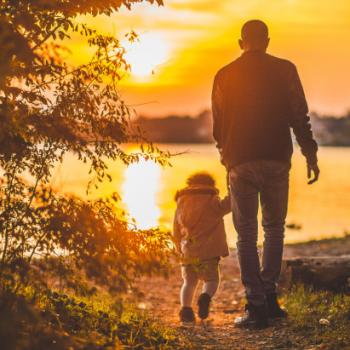
I have read all sorts of commentaries lately both for and against North Carolina’s so-called “bathroom bill.” I agree with the 250 leading sexual abuse and domestic violence prevention organizations that have come out in opposition to these bills. I agree with them for a number of reasons. First, I think transgender people have the right to use bathrooms in peace. Second, I think intersex people — who are constantly glossed over in these conversations — have the right to use bathrooms in peace. They do not deserve to be collateral damage in our culture wars. And third, I believe bathroom bills fundamentally undermine child protection efforts. Let me repeat that third part: bathroom bills fundamentally undermine child protection efforts.
Make no mistake: those who support bathroom bills make great efforts to cast themselves as the noble champions of children and women. Family Research Council, for example, stated that the absence of such bills might “threaten the public safety of women and children by creating the legitimized access that sexual predators tend to seek.” National Review warned that, without such bills, “A clever (or not so clever) rapist could smear on some lipstick, call himself transgender, and waltz right into a locker room full of half-dressed teenage girls.” Republican Senator Ted Cruz argued that the absence of such bills is “opening the door for predators.” This, despite Cruz having a dismal, even dangerous, record when it comes to child advocacy.
The arguments in favor of the bills that most move me—even though I disagree with them—come from fellow abuse survivors. The Federalist, for example, featured an emotional, powerful piece aptly titled, “A Rape Survivor Speaks Out About Transgender Bathrooms.” I disagree with that article’s conclusion, but—as a fellow survivor of sexual abuse—I get it. Certain environments remind me of my abuse experiences and I avoid similar-feeling environments. That’s part of PTSD. I would never attack someone for being honest about their PTSD triggers.
The problem is that bathroom bills, even when championed by child abuse survivors, rest upon a fundamentally dangerous myth: that strangers pose a greater danger to our children than non-strangers. This is called the stranger danger myth. It is a myth with regards to not only child abuse, but also adult sexual abuse. Just as children are far more likely to be abused or abducted by someone they know, so, too, are adults far more likely to be abused by someone they know. The aforementioned Federalist article is a good example of this: the author indicates that she was abused not by a stranger or a transgender female but by a close male acquaintance. That generally fits the actual profile of most sexual predators in the U.S.: a religious heterosexual male who targets and isolates people within his own sphere of family and friends.
Despite this profile, the stranger danger myth has reigned supreme in the public consciousness, including the American church. It has had devastating, life-changing impacts for many children, as it has encouraged churches to ignore the predators in their own midst. Fortunately, through great efforts on the part of child abuse and domestic violence organizations (like the 250 organizations who oppose bathroom bills), this myth has finally started to recede. It has even started to recede in the American church. People like Boz Tchividjian of Godly Response to Abuse in Christian Environments, author and abuse survivor Mary DeMuth, child advocates Justin and Lindsey Holcomb, and Victor Vieth of the Gundersen National Child Protection Center have helped create a sea change in how American Christians think about sexual abuse. The church is waking up to the fact that, as Tchividjian says, “Those who pose the greatest risk to our children are within our families, churches, and circle of friends.”
Unfortunately (and counterproductively), bathroom bills are predicated on the stranger danger myth. The bills directly promote and take advantage of the myth so many abuse survivor advocates have worked so hard to overcome. The bathroom bills want you to think that strangers are lurking around the corner, ready to take full advantage of transgender people’s bathroom rights. The bills want you to think that strangers now pose a greater danger to your children than the people at your church. The bills want you to ignore the fact that the most active child sexual predators molest both boys and girls, so which restroom they use makes little difference. The bills want you to ignore the fact that women can be predators, too. But no matter what these bills want you to think or ignore, giving transgender people the right to use whatever restroom they want does not change the basic facts about child abuse and sexual abuse.
As a child abuse survivor, I do not hold it against other survivors who find certain situations triggering. I understand that everyone has unique triggers. But I consider it inappropriate if your response to those triggers involves making the fight against child abuse harder for other people. It does not have to be that way.
As a child abuse survivor, I also think we must stand together in solidarity with one another—which means we need to stand in solidarity with transgender people. Abuse survivors only add salt to other survivors’ wounds when they ask this of transgender people: “Don’t they know anything about predators?” Of course they know about predators. They experience higher rates of victimization, even murder. While 1 out of every 6 women and 1 out of every 33 men have been the victim of sexual violence, around half of transgender people will experience sexual violence at some point in their lifetimes.
Around half.
That is 1 out of every 2.
The numbers go on. Nearly 80% of transgender people report experiencing harassment at school. Yet we’re worried about transgender people being the harassers. 12% of transgender youth report being sexually assaulted in K–12 settings by peers or educational staff. This, too, is higher than the general population by several percentage points. Yet we are worried about transgender people being the assaulters.
Instead of targeting a population that is particularly vulnerable to abuse, the people of North Carolina should be targeting real, pressing issues faced by their state’s children. For example, North Carolina could stop letting adults marry 14-year-old children. Or they could require background checks of private school teachers. Or they could ban convicted rapists from homeschooling. Or they could make female genital mutilation a state crime. Or they could stop sending children to adult jails. Or they could even implement child protection recommendations from 6 years ago, including strengthening the public school system’s teacher screening process. Think about it: many of the adults who would enforce the North Carolina bathroom bill in public schools have not had adequate background checks. In terms of best practices for child protection, that is a bit problematic.
Best practices for child protection do not involve targeting vulnerable populations. They involve awareness and education, teaching families and children about consent and safety, access to therapy and services, law enforcement, background checks and mandatory reporting, and increasing families’ quality of life—all things that bathroom bills entirely neglect. If we are serious about child protection, we need to stop with the red herrings.












